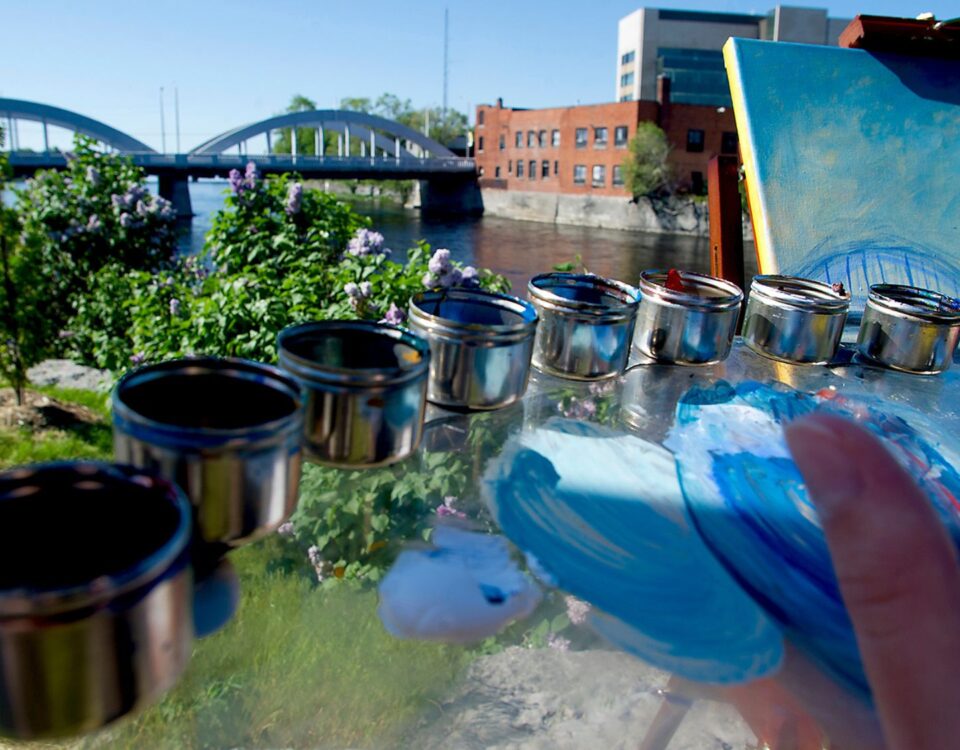
Give Denis Newman a snapshot of a building – especially one with historical significance or a connection with mining – and he will transform it into a pen and ink sketch. Newman, a resident of Belleville, has a collection of almost 2,500 original drawings that have been published in dozens of magazines In fact, Newman, a resident of Belleville, has a collection of almost 2,500 original drawings that have been published in dozens of magazines, in books by award-winning authors such as Michael Barnes and Denyes Chabot, and displayed in numerous provincial venues.
Newman sees his effort to “capture the essence and state of buildings, and in particular, the history of mining, as a way to respect history and allow it to say its story, as well as a way to honour the roles people have played.” His ‘heritage series’ of roughly 500 detailed drawings of mines, and mine-related subjects, chronicles the evolution of mining across every province and territory from 1860 to the present. He also has a passion for things renowned or unique, such as old churches, trains, and planes.
Newman grew up in Timmins during the Second World War and credits his upbringing for his passion for mines. His father was the Mine Captain at the Paymaster Mine where sixteen men perished in 1945 when “the cage went down,” and later became the Underground Superintendent at the Dome Mine.
Although mines and mining were important aspects of Newman’s early life, it was not until 1997, after a long career of teaching at the Ontario School for the Deaf (now Sir James Whitney School), that Newman took up sketching and re-discovered his love of mines. He claims not to view his work as ‘art’ or as a road to fame, but rather he is genuinely committed to fostering awareness of culture and history.
That is not to say Newman’s drawings do not have artistic merit. His focus on precise details, perspective, and use of images that have faded or been lost, capture the essence of places and structures in a manner that is quite remarkable. He speaks of mines such as INCO and Falconbridge like lost loves, and notes that “once a mine ceases operation, the company must legally turn back the land to the way it was. My pictures provide images of what used to be and that’s so important for future generations.” In fact, his collection itself is overwhelming in terms of volume and range and is a testament to a life’s work that is chiefly concerned with heritage.
Newman is hopeful that his work will continue to be valued, and that he can leave a legacy. He is currently looking for assistance to “facilitate an awareness of what I do and make people more aware of history” through the creation of an archive of his original pieces, as well as an online presence. An engaging speaker, he also welcomes opportunities to showcase his sketches or to educate people about the history of mines, and he is open to commissions.


